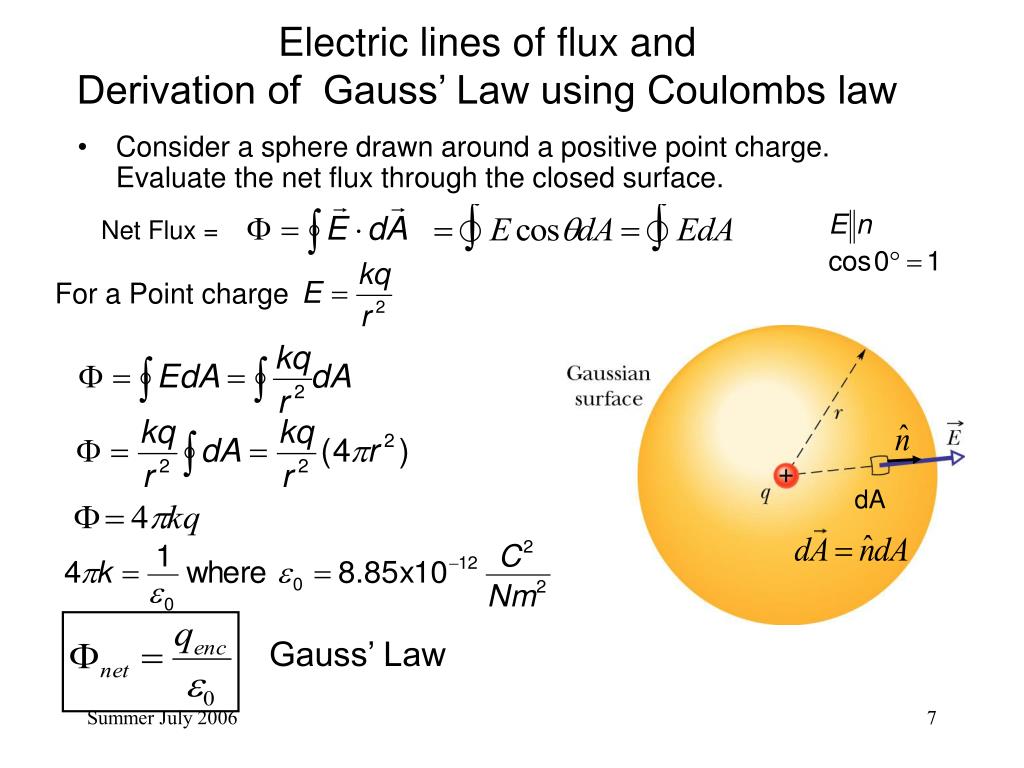
The current induced in the coil creates another field, in the opposite direction of the bar magnet’s to oppose the increase. The electric flux density D E, having units of C/m 2, is a description of the electric field in terms of flux, as opposed to force or change in electric potential.
N value in electric flux formula free#
Lenz’ Law: (a) When this bar magnet is thrust into the coil, the strength of the magnetic field increases in the coil. Gauss’s law for electricity states that the electric flux across any closed surface is proportional to the net electric charge q enclosed by the surface that is, q / 0, where 0 is the electric permittivity of free space and has a value of 8.854 × 10 12 square coulombs per newton per square metre. Faraday was aware of the direction, but Lenz stated it, so he is credited for its discovery. all electric charges are on the exterior surface of the. the electric field within the conductor is zero. The Formula for Electric flux: The total number of electric field lines passing through a given area in a unit time is the electric flux. The direction (given by the minus sign) of the EMF is so important that it is called Lenz’ law after the Russian Heinrich Lenz (1804–1865), who, like Faraday and Henry, independently investigated aspects of induction. Gauss Law states that the net electric flux through any closed surface is equal to the electic charge enclosed by that surface, divided by the permittivity of free space (epsilon-nought) Charges in a conductor arrange themselves so that. The minus means that the EMF creates a current I and magnetic field B that oppose the change in flux Δthis is known as Lenz’ law. The minus sign in Faraday’s law of induction is very important. (Electric field can also be expressed in volts per metre V/m, which is the equivalent of. The units for EMF are volts, as is usual. For that reason, one usually refers to the flux of the.

and can be thought of as a measure of the number of field lines from the vector field that cross the given surface. Flux is always defined based on: A surface. This relationship is known as Faraday’s law of induction. Gauss’ Law makes use of the concept of flux.


 0 kommentar(er)
0 kommentar(er)
